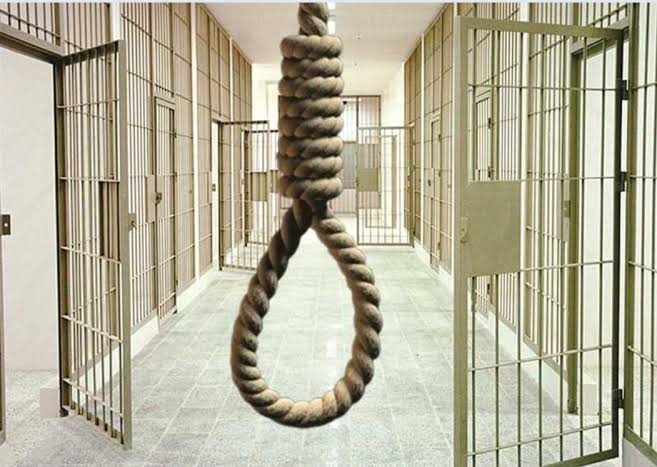News
Kiri Dam: FG set to begin electricity generation
According to a report on October 25, 2024, the Federal Government has started its moves to enhance the utilization of dams to generate electricity as it prepares Kiri Dam in Adamawa State.
During an inspection tour of the dam facility to evaluate its structural integrity, the Director of Dams and Reservoir Operations at the Federal Ministry of Water Resources and Sanitation, Mr Ali Dalla, announced the commencement of a retrofitting project aimed at enhancing the dam’s power generation capabilities.
The measure as reported is said to form part of the comprehensive strategy aimed at augmenting Nigeria’s electricity generation capacity, promoting economic development, and reducing dependence on traditional energy sources.
“The dam, situated in Shelleng, serves as a vital water reservoir, presently supplying irrigation water for the sugarcane plantation of the Dangote Sugar Refinery in Numan,”Dalla said.
“Our initial findings suggest that the dam is suitable for electricity generation.”
“The full scope of its capacity will be determined and made public once the comprehensive study is concluded,” said Dalla.
Dalla expressed confidence in the structural integrity of the dam, noting that “despite being over 40 years old, it remains in excellent condition.”
“We have arrived as part of our ongoing tour of Nigerian dams, with the primary objective of assessing the physical condition of this dam,” he stated.
“Our goal is to evaluate its overall health and identify potential vulnerabilities.”
“It is also to prevent a repeat of the devastating flood that occurred at Alau Dam in Borno State earlier this year, which resulted in significant loss of life and displacement of over 400,000 people.”
The water resources engineer reported, “the Kiri Dam’s integrity has been verified through our comprehensive physical inspection.’
“Dam integrity verification involves a comprehensive evaluation, including internal assessments beyond physical inspections.”
“Our preliminary findings are positive, pending further examination.”
Kiri Dam
The Kiri Dam is located in Shelleng Local Government Area of Adamawa State, Nigeria. The Dam is an earth dam.
Purpose of Kiri Dam
The primary purpose of the Kiri Dam is irrigation, but it also provides water supply for surrounding communities and supports fishing.
Construction of Kiri Dam
The dam was constructed in 1985 and it has a capacity of 600 million cubic meters. It is approximately 1,300 meters long and about 10 meters high.
Catchment area of Kiri Dam
The dam’s catchment area covers approximately 2,600 square kilometers.
Benefits of Kiri Dam
The Kiri Dam supports irrigation for agricultural purposes, water supply for nearby communities, fishing and aquaculture, flood control and hydroelectric power generation potential.
Challenges
The dam faces challenges such as siltation, inadequate maintenance, climate change impacts and water pollution.
Rehabilitation efforts
The Nigerian government has initiated rehabilitation projects to improve the dam’s structural integrity and increase its water storage capacity.
Operations and management
Kiri Dam is managed by Nigeria’s Federal Ministry of Water Resources and operated and maintained by the Upper Benue River Basin Development Authority.
There are also water level monitoring and control systems in place.
Hydrology and water quality
It has approximately 2,600 km² catchment area, average annual rainfall of 800-1,000 mm, water storage capacity of 600 million m³ and water quality monitoring programs in place.
Irrigation and agricultural benefits
The dam supports irrigation for over 10,000 hectares of farmland as it helps in growing crops grown like rice, maize, sorghum, and vegetables.
Also, it benefits local farmers and contributes to national food security.
Fisheries and aquaculture development
It supports artisanal and commercial fishing with estimated annual fish production of about 1,500 tons.
Flood Control and Hydroelectric Power Potential
Kiri Dam helps to regulate flood waters downstream and potential for small-scale hydroelectric power generation (1-5 MW).
Rehabilitation and maintenance efforts
The dam has regular maintenance and repairs conducted, rehabilitation projects undertaken (e.g., dam reinforcement), and funding support from government and international organizations.
Socio-economic benefits to local communities
The dam provides employment opportunities, supports local economic development and improves food security and livelihoods.
Future development plans
It aims to expand irrigation schemes, develop hydroelectric power generation and enhance water supply and sanitation services.
For Diaspora Digital Media Updates click on Whatsapp, or Telegram. For eyewitness accounts/ reports/ articles, write to: citizenreports@diasporadigitalmedia.com. Follow us on X (Fomerly Twitter) or Facebook












